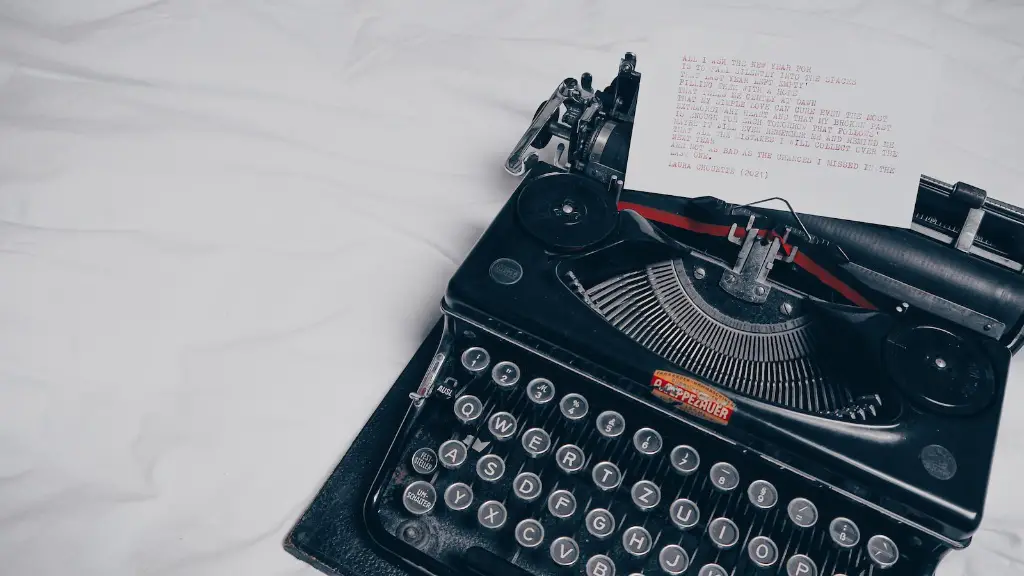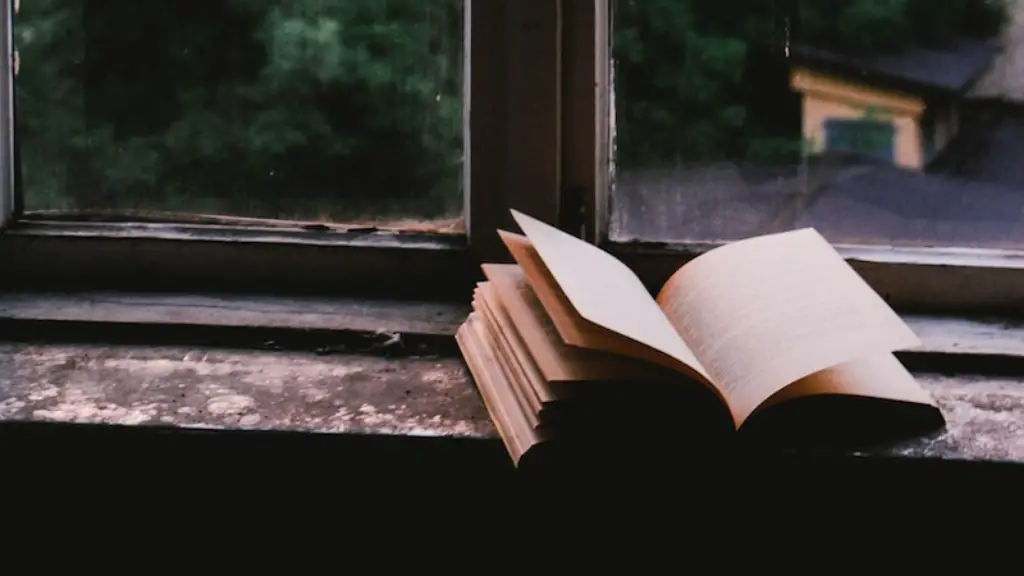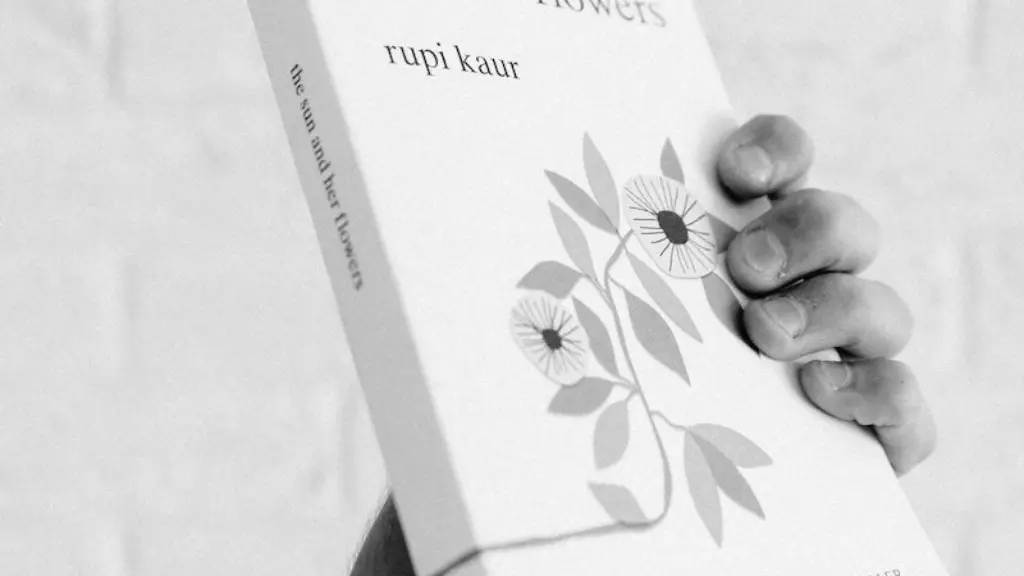Background
Narrative in poetry is a type of poem that tells a story and facilitates the reader to enter into the poem to experience its meaning. it is a type of genre that has no rigid structure or style, giving authors the opportunity to explore their creativity. It usually contains elements of time and place, a detailed description of characters and a plot. Different writers have their own interpretations of what narrative in poetry is, but some features are common to all stories. For example, the story is usually told in the first-person point of view and incorporates imagery and metaphor to bring the narrative to life.
Defining Narrative Poetry
Narrative poetry is a type of verse written in the form of (confined) verse consisting of a narrative journey or story. It has been used for centuries and has various forms, some of which can be found in classical literature from ancient times. Generally, poems of this genre may include a combination of stanzas, lines, and rhyme schemes, though this is not always the case. It is most often written in first-person or with a “poet-speaker” as the protagonist. This can create a heightened sense of empathy and understanding between the audience and the poet, as it offers an in-depth look into their thoughts, feelings and experiences.
Foreign Influences
Foreign influences have strongly affected the history of narrative poetry. Ancient techniques and patterns can be found in many traditional narrative poems, as these influences merged with the different cultures of different areas to create more diverse and intricate styles. This also gave a voice to the many cultures of the world, introducing different ideas and stories. Through applying poetic techniques to these, many complex and interesting stories have been created and preserved in the form of narrative poetry.
Types of Narrative Poetry
Narrative poems can vary in both form and content, depending on their purpose and context. Major forms of narrative poetry include epic, saga, ballad, fable and mock epic. Each of these form has its own distinct characteristics and purpose. For instance, an epic poem typically tells an important story of great length, while a saga poem is more focused on telling the story of an individual within their larger context. Additionally, different types of narrative poetry have different formats, such as free verse, sonnets, odes, and other poetic styles.
Uses of Narrative Poetry
Narrative poetry can be used for different purposes, from storytelling to conveying a political message. It has often been used to pass down tales and legends from generation to generation, turning them into a part of culture and history. Stories from oral culture and folklore were famously used by William Shakespeare to write his famous plays and sonnets. In today’s world, this type of poetry is still used to narrate or convey personal experiences or to raise awareness about various issues.
Form and Content
The form and content of a narrative poem will depend on the type of poem, the author’s intent, and the context. In general, however, narrative poems are made up of characters, a setting, a plot, conflict, and a resolution. They can be written in a variety of forms, such as free verse, traditional rhyme, or even a combination of the two. The length of a narrative poem can vary depending on its context, but most are at least eight lines long.
Development of Narrative Poetry
Narrative poetry has remained popular throughout the centuries, as it allows writers to explore greater depths when expressing their ideas and emotions. Many authors in the past and in the present use narratives to discuss themes such as love, courage, honor, death, and more. As technology advances, narrative poetry has continued to develop and explore innovative ways to tell stories through different media tools, such as video, audio, and even interactive formats.
Popular Narrative Poems
Some of the most beloved and popular narrative poems in history include Homer’s Odyssey, John Milton’s Paradise Lost, William Claytor’s The Ballad of Birmingham, and Robert Frost’s The Road Not Taken. These poems have stood the test of time and remain to be some of the most influential works in literature. Despite their different styles, they all have a common theme of describing a journey, a conflict, and a resolution.
Narrative Poetry vs. Lyric Poetry
Narrative and lyric poetry are two very different forms of verse that are sometimes confused for one another. While narrative poetry is made up of characters and a plot, lyric poetry typically focuses more on expressing ideas, feelings, and sensations. As opposed to telling a story, lyric poetry often takes real or imagined situations and uses imagery and metaphors to explain them. Examples of lyric poetry include Walt Whitman’s Leaves of Grass and William Blake’s Songs of Innocence.
Writing Narrative Poems
Narrative poems are usually written like short stories, and can often be written in the first-person point of view. It is important to remember that there is no one correct way to write a narrative poem. To get started, it can be helpful to brainstorm some ideas and topics and think of how you want to convey your message. Focus on making the plot and characters as vivid and engaging as possible, and don’t forget to bring it all together with a satisfying resolution.
Examples of Narrative Poetry
Many narrative poems are now popular for their artistry and beauty, as well as their stories. Some of the most famous examples include Alfred Lord Tennyson’s The Lady of Shalott, William Wordsworth’s I Wandered Lonely as a Cloud, and William Butler Yeats’s The Second Coming, to name a few. These poems remain popular and have been studied by many critics and academics due to their complex themes and stories.
Narrative Poetry in Modern Times
Narrative poetry continues to be a popular form of expression in the modern age. Today, poets use this form as a way to explore themes of love, heartache, identity, and belonging. Poets also use narrative poetry as a tool to talk about current events, politics, and social justice. In any case, narrative poetry remains a powerful and relevant way of conveying personal stories, experiences, and ideas to the world.



